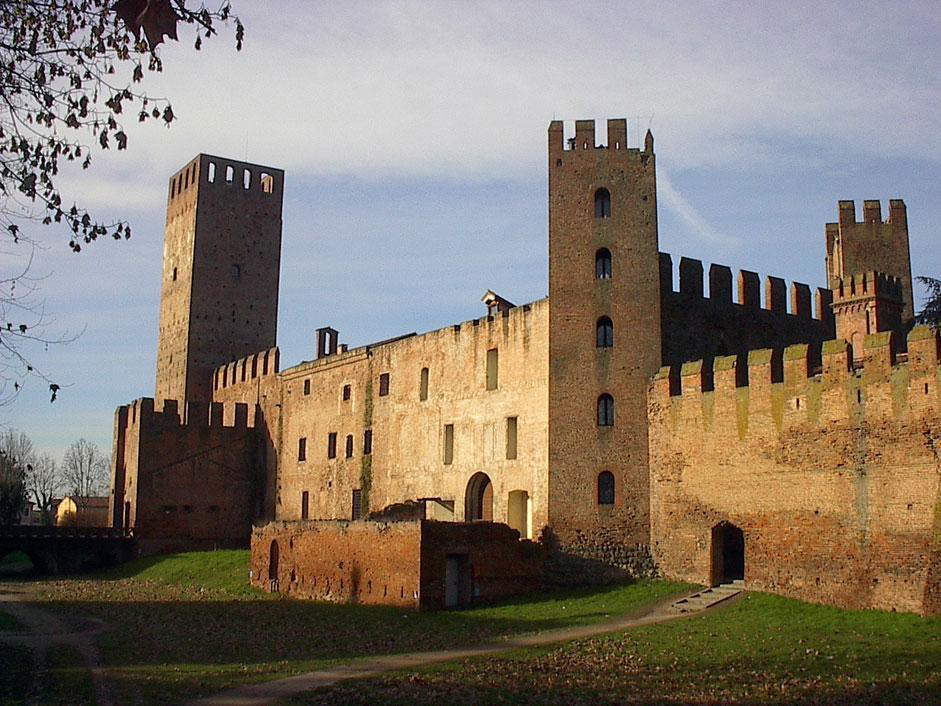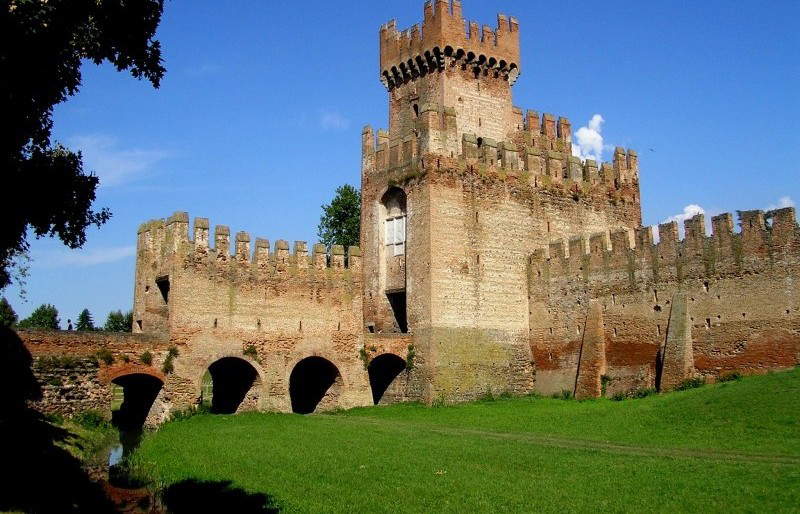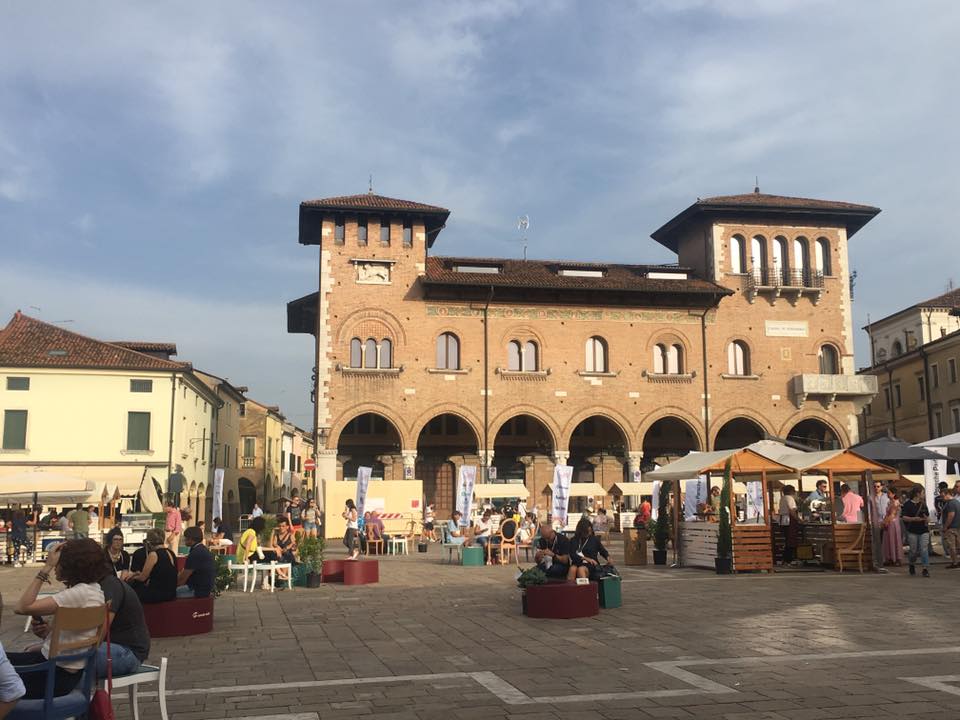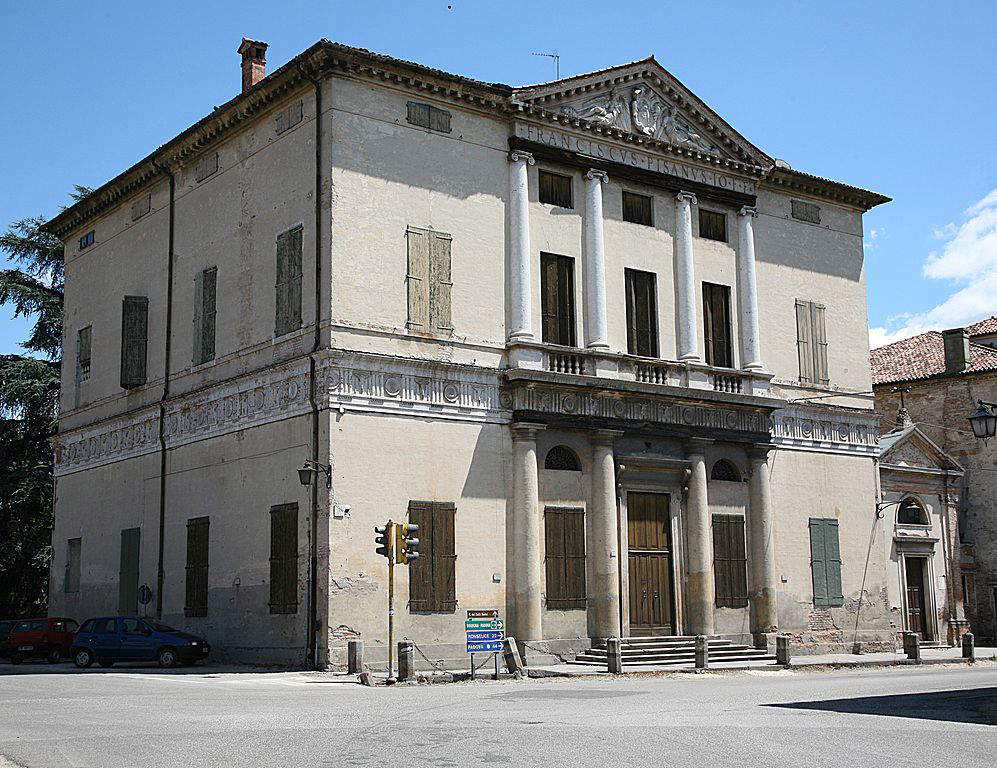by Redazione , published on 20/07/2020
Categories: Travel
/ Disclaimer
A trip to Montagnana, a village enclosed within its medieval walls, among the best examples in Europe.
There is a piece of Montagnana that ended up in Rotterdam: it is a drawing depicting the Castle of San Zeno, a thirteenth-century fortress built by Ezzelino III da Romano (its keep, the Ezzelinian donjon, is still there, almost forty meters high, to remind us of the founder), remodeled over the centuries but still with a layout and appearance that today is not too dissimilar from what it must have looked like at the time. Today it is home to cultural institutions: the “Antonio Giacomelli” Civic Museum, the Civic Library and the Castles Study Center are located there, but in the early 16th century it still fully performed its defensive functions. The folio is attributed to Giorgione, who depicted it precisely between 1501 and 1502 (or so one might think), and who has lately become a sort of genius loci of this village in the province of Padua: much research (by distinguished scholars such as Enrico Maria Dal Pozzolo, Augusto Gentili, Lionello Puppi and others) has tried to establish whether and how much the great father of Venetian tonalism painted here. In between may have been a prelate, Domenico Grimani, who became a priest of Montagnana Cathedral in 1497 and a collector of Giorgione.
In the Duomo of Montagnana, on the counter-façade, there are a David and a Judith discovered in 1930, as part of some restoration work on the walls of the cathedral: they re-emerged from the plaster that had concealed them for who knows how long, and for decades an interesting attribution debate arose around these extraordinary figures, of very high quality, and continues to this day. Perhaps, they could be by Giorgione himself: but we have no evidence to say for sure, not least because the only “document” (if we want to call it that) that can attest to the painter’s presence in Montagnana is that very Dutch sheet. And we do not know why there are no written traces left of his eventual stay in the village.
 |
| The walls of Montagnana: in the background the bell tower of San Francesco |
 |
| Giorgione (attributed), Castel San Zeno in Montagnana (1501-1502; sanguine on paper; Rotterdam, Museum Boijmans van Beuningen) |
 |
| One of two frescoes in the cathedral attributed to Giorgione: the David |
 |
| Montagnana, the Castle of San Zeno |
Vicissitudes hidden in the folds of history, but which resurface through the images that the traveler can find in this fortified town, which appears almost as a surprise among the Veneto countryside, past Legnago, as the landscape prepares to change when the first offshoots of the Euganean Hills are glimpsed a short distance away. The walls that surround it have been preserved in their entirety: this is a rather rare case; very few cities with medieval walls have kept them intact since the mid-14th century, a time when the Carraresi of Padua did their best to strengthen this city, a very important outpost of their territory, on the border with the Scaliger lands (Legnago was already under Verona). The fact that, with the swift end of the Carraresi, Montagnana almost totally lost its strategic role helps to explain why the walls have been so well preserved, still with all their twenty-four towers, once significant control and defense posts, and then becoming granaries and storehouses when Montagnana no longer held any military function. Even today, the walls are one of the main reasons why people visit the town.
One usually enters from the Rocca degli Alberi, erected in the 14th century, also by the Carraresi: large swing gates, drawbridges, guard towers. This was the way Montagnana welcomed those who arrived. Today, however, Montagnana is a little less austere: past the red brick of the Rocca degli Alberi, one immediately enters an opera town, under the two wings of porticoes that escort travelers to the central Piazza Comunale. Or “Piazza Maggiore,” or simply “the square,” as they say in these parts: it’s the hub of the whole village, paved with listòn as befits every Veneto town. Don’t be misled by the shapes of the mighty Palazzo della Cassa di Risparmio, which might make us think of Gothic architecture: it is a splendid building from the 1920s, with a medieval flavor as it was going in the early twentieth century. On the adjoining side of the square, here opens, solitary, the Cathedral of Santa Maria Assunta, which immediately intrigues us because it is without a bell tower (bells ring from the turrets on the facade). We admire its bare exterior, its sober gabled facade, the marble portal that tradition assigns to Jacopo Sansovino, the Renaissance interior: this is where the two frescoes attributed to Giorgione are found, but there is also more, starting with a Transfiguration by Veronese and some panels by Marescalco, real name Giovanni Buonconsiglio, an underrated artist from Montecchio Maggiore who lived between the 15th and 16th centuries, in contact with the greatest.
 |
| Montagnana, Rocca degli Alberi |
 |
| Cathedral of Montagnana. Ph. Credit Alain Roullier |
 |
| The Piazza of Montagnana |
 |
| The Palace of the Cassa di Risparmio |
 |
| Villa Pisani. Ph. Credit Hans Rosbach |
One will be surprised to see that a few steps away is a building attributed to Michele Sammicheli, the architect who built half of Verona in the early 16th century and who built the Fort of St. Andrew in Venice: it is the city’s Town Hall, the construction of which began in about 1537 (although in 1593, after a devastating fire, it was rebuilt, although in forms that still manifested debts to Sammicheli). Taking via Scaligera, parallel to the main street, one comes across the soaring bell tower of the church of San Francesco, the tallest tower in the city, visible even from a long distance: the church is 14th-century, but perhaps earlier since Romanesque elements are also found there, and it is an imposing building, enlarged over the centuries, attached to an ancient monastery. Noble palaces from all eras (see, for example, the elegant facade of Palazzo Magnavin-Foratti) testify to how the city was prosperous for long ages.
Wide, porticoed streets that retain their ancient layout and overlooked by houses of all colors, a small handbook of Veneto art of the 15th, 5th and 17th centuries (but not only) with pages to leaf through in the churches and the city’s civic museum, the regular layout of the walls, with the towers that, neatly, punctuate it. A magic ring that enchants anyone who sees it coming after crossing the countryside: but if you think that everything ended inside these walls, you are wrong. Just outside is Villa Pisani, a well-balanced Renaissance building designed by an architect named Andrea Palladio. Because Montagnana did not want to miss anything.
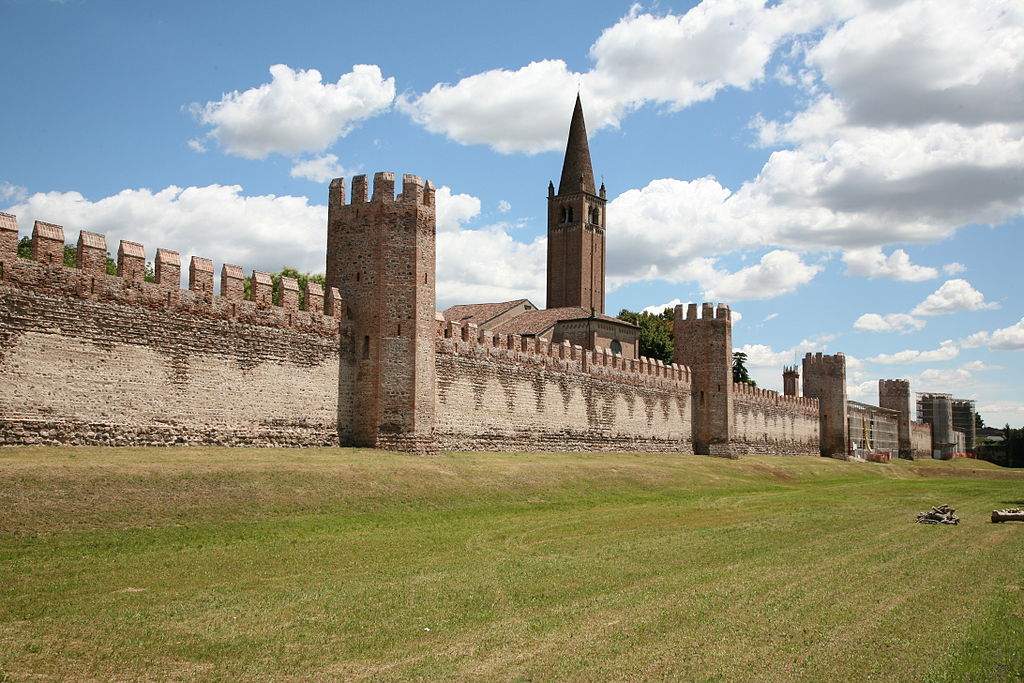 |
| Montagnana, between medieval walls and Giorgionesque ghosts |
Warning: the translation into English of the original Italian article was created using automatic tools.
We undertake to review all articles, but we do not guarantee the total absence of inaccuracies in the translation due to the program. You can
find the original by clicking on the ITA button. If you find any mistake,please contact us.



